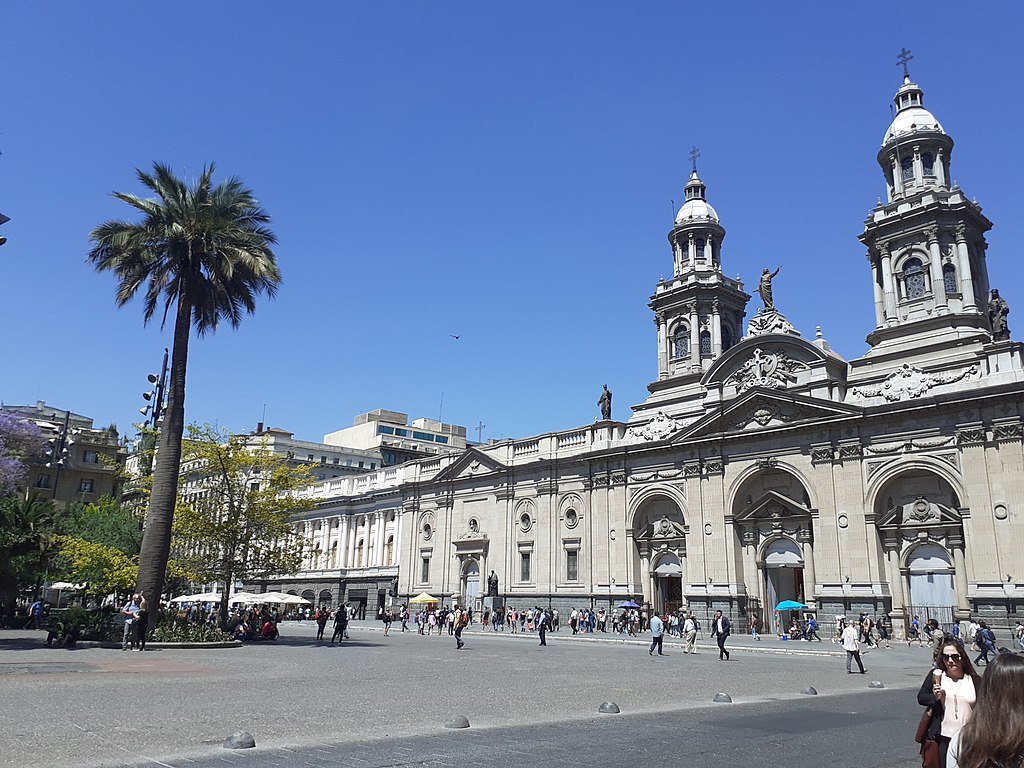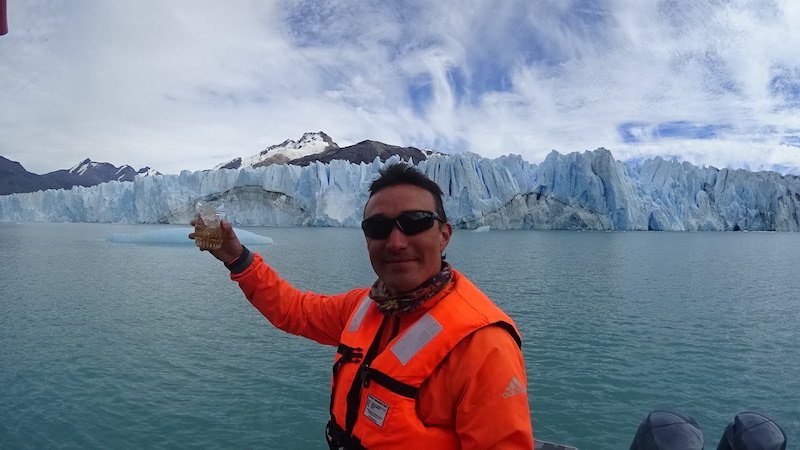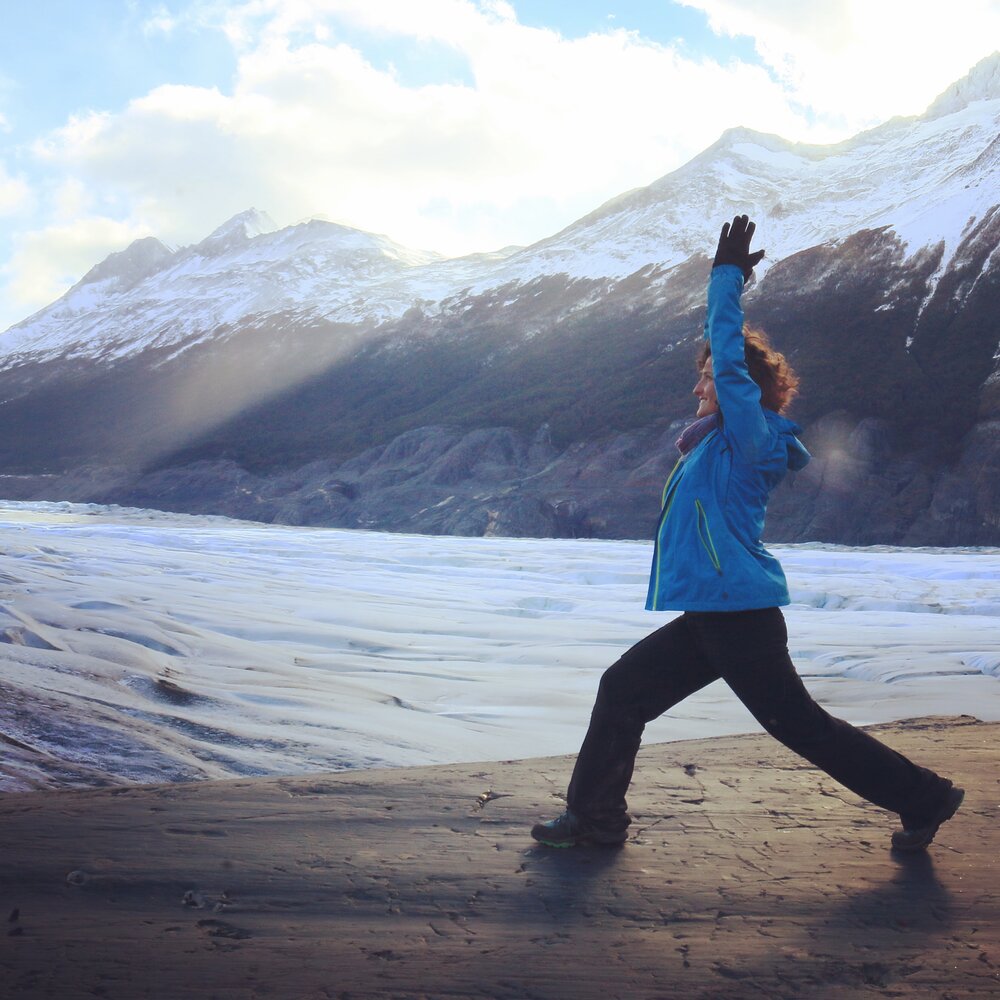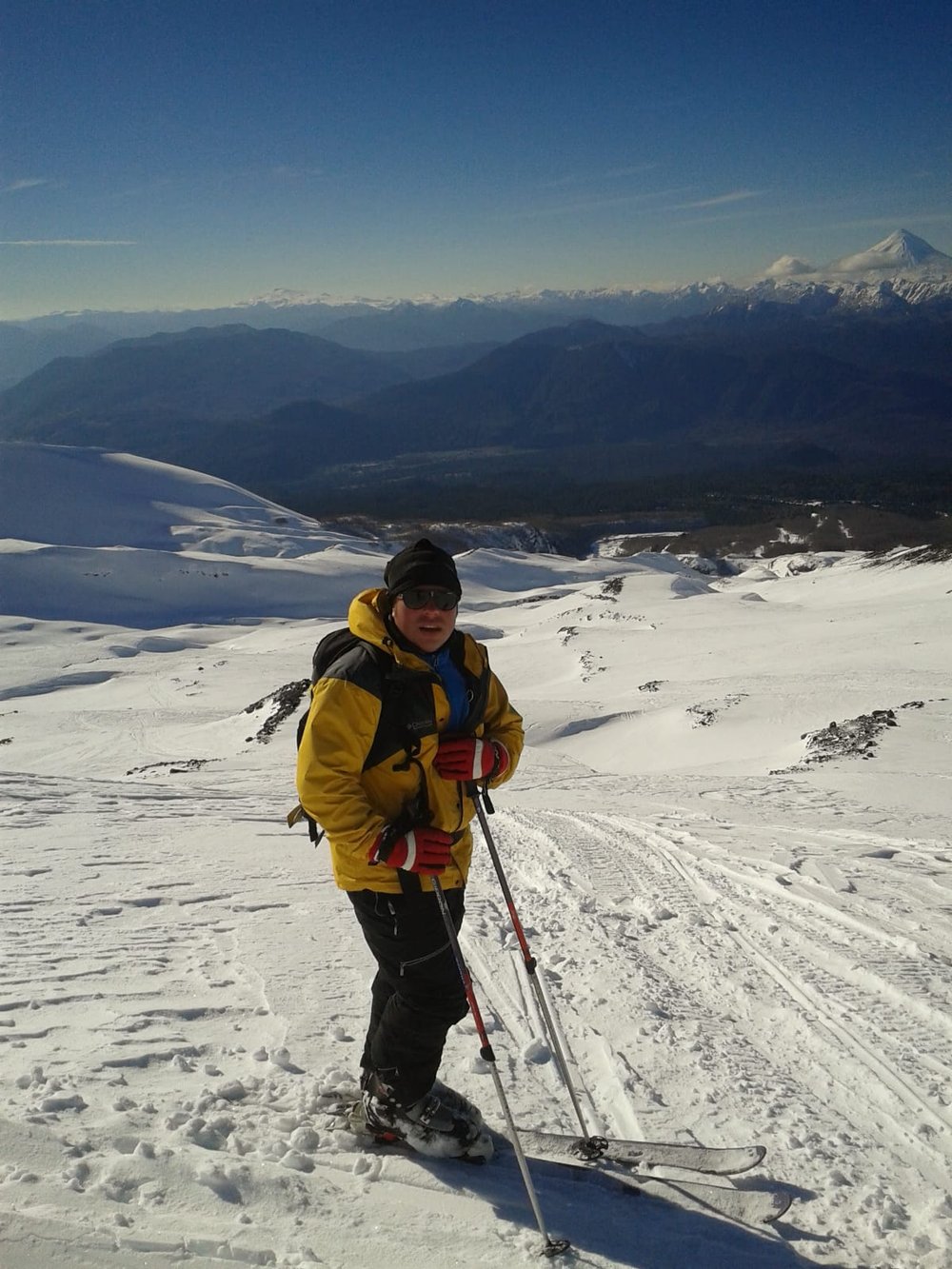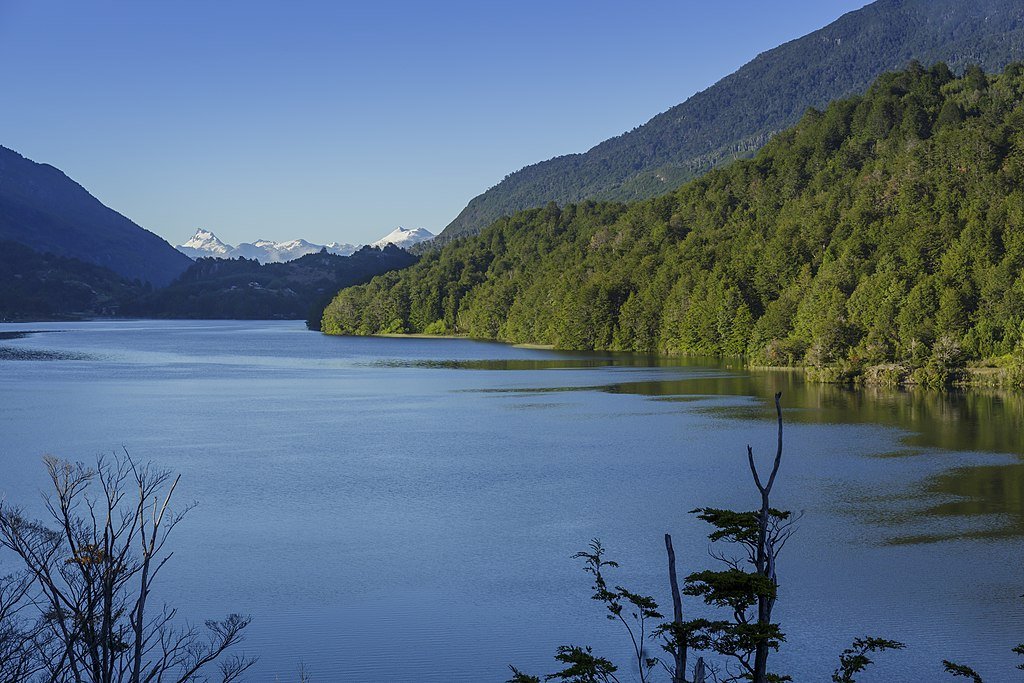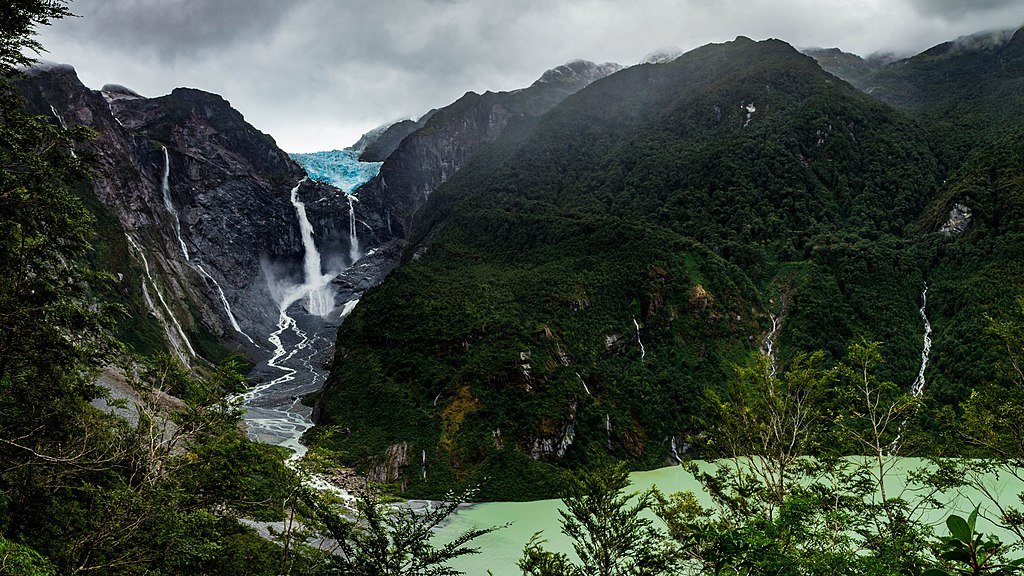10-Day Southern Chile Itinerary
This itinerary is all about the stunning landscapes that you’ll encounter everywhere during your road trip in southern Chile, especially along the Carretera Austral, which has become one of the most popular tourist destinations in Chile in recent years.
Even so, it’s relative popularity hasn’t spoiled the area at all, and it remains one of my favorite road trips in the entire country.
This marvelous stretch of road traverses 770 miles through some of Chile’s most stunning and remote landscapes. All along the drive, you will marvel at the snow-capped peaks of volcanoes, navigate through untouched forests, climb towering mountains, and be enchanted by crystal-clear lakes.
The Carretera Austral offers travelers a chance to become completely immersed in nature. An adventure-lovers paradise, you’ll have endless opportunities for hiking, rafting, and countless other thrilling outdoor activities.
And from a cultural standpoint, this is also one of the most interesting places you can visit in Chile. Remote and largely undisturbed by mass tourism, the towns along your route are filled with friendly locals who will introduce you to authentic Patagonian culture and cuisine.
So, let’s get ready for an extraordinary adventure!
More Chile travel info:
For more information on visiting Chile, check out our list of 17 places to visit in Chile and this guide on where to go in Patagonia.
If you could use some one-on-one help planning your itinerary, schedule a Chile travel consultation with one of our Local Experts!
Table of Contents
Itinerary overview
10-day itinerary
Day 1: Santiago
Day 2: Santiago to Puerto Varas
Day 3: Chiloé - Ancud, Castro, and Cucao
Day 4: Chiloé - Trekking in Parque Tantauco
Day 5: Chaitén and Lago Risopatrón - beginning of the Carretera Austral
Day 6: Excursions on Lake Risopatrón
Day 7: Hiking in Queulat National Park
Day 8: Puerto Río Tranquilo and the Marble Cathedral
Day 9: Exploradores Glacier and Laguna San Rafael National Park
Day 10: Puerto Río Tranquilo to Almaceda Airport with a stop in Villa Cerro Castillo
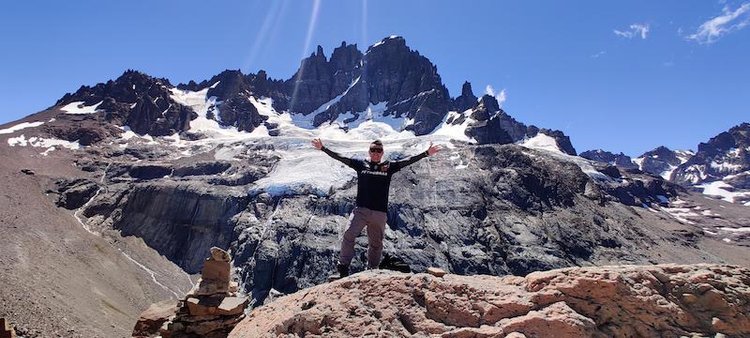

Itinerary overview
Your journey begins in Santiago, our bustling capital city and a true South American Metropolis. Often overlooked or rushed through, Santiago will interest you with it’s unique blend of history, modernity, and charm.
Here, you can discover the rich heritage of the Plaza de Armas and the grandeur of La Moneda Palace. You can lose yourself in the bohemian vibes of the Bellavista neighborhood and indulge in the flavors of traditional Chilean cuisine. Santiago has a lot to offer!
Once you’ve finished exploring our capital city, you’ll leave the it behind and will venture south to Puerto Varas and the Lake District, before continuing on to the incredible island of Chiloé.
After a few days of island life, it’s time to catch a ferry to Chaitén, where you’ll begin your journey into the untamed beauty of the Carretera Austral. Despite it’s growing popularity (and increasing numbers of tourists), this remains one of my favorite road trips in the entire country.
As you make your way south, prepare to be greeted by awe-inspiring landscapes at every turn. There are gorgeous coves in the fjords of Aysén, marble cathedrals in the middle of Lake General Carrera, hanging glaciers, and a shocking abundance of truly wild places unlike anywhere else on earth.
Your journey continues as you explore picturesque towns like Puyuhuapi, Coyhaique, and Cerro Castillo, each of which offers its own distinct charm and natural wonders, from majestic mountains to rejuvenating hot springs.
You’ll hike in valdivian rainforests in Queulat National Park, paddle your way through caves in Puerto Rio Tranquillo, and climb on the Exploradores Glacier.
This itinerary is a perfect blend of cultural immersion, outdoor adventures, and breathtaking landscapes. Whether you're a nature enthusiast, a thrill-seeker, or a cultural explorer, you will find plenty to keep you entertained.
The journey from Santiago to and along the Carretera Austral promises to be an unforgettable experience that will leave you in awe of Chile's natural beauty and cultural richness.
Day 1 - Explore Santiago
Santiago de Chile is the largest city in Chile and the nation’s bustling capital. It's nestled in a valley, surrounded by the breathtaking snow-capped Andes and the beautiful Chilean Coastal Range.
Over the years, it has become a beloved destination for tourists in the region, as it offers a wonderful fusion of Latin American and European cultures.
Morning
Start your day by visiting the Plaza de Armas, the city’s lively central square located in the heart of Santiago. Take your time to explore the square and soak up the atmosphere.
While here, don't miss the chance to visit the Metropolitan Cathedral, with its stunning neo-gothic architecture. It's a magnificent sight that shouldn't be missed.
Afterwards, continue exploring Santiago’s bustling downtown. Take a leisurely stroll and admire iconic landmarks such as the ex-Congreso and La Moneda Palace. These historic sites offer a glimpse into the rich history and culture of Chile.
Just a short walk from the Plaza de Armas, you'll find the famous La Vega Central Market. This vibrant open-air market is a feast for the senses. Lose yourself amongst the lively crowds as you explore the diverse range of fresh produce, Chilean prepared dishes, and unique local crafts.
While guided tours are available, I recommend exploring the market on your own and at your own pace.
When hunger strikes, head to the market's dining area, where you can savor authentic and traditional Chilean dishes.
La Vega Central Market is a true emblem of Chilean commerce, and I suggest dedicating a couple of hours to fully immerse yourself in its vibrant atmosphere. And of course, leave some time for a leisurely lunch, where you can sample the flavors of authentic Chilean cuisine.
The Metropolitan Cathedral in the Plaza de Armas. Photo: Sfs90, CC BY-SA 4.0, via Wikimedia Commons
Afternoon
After enjoying a delightful lunch at La Vega, why not take a ride on Santiago's subway over to the Parque Metropolitano, located on Cerro San Cristobal. The parkoffers panoramic views of Santiago and a clear look out to the magnificent Andes Mountains, and it’s a must-visit place on any Santiago itinerary.
To get there, you’ll take the subway to either the Pedro de Valdivia or Baquedano station. Then, the choice is yours for how you want to make your way up to this hilltop park: you can opt for a funicular ride, accessible from the Pio Nono exit near Baquedano station, or take the cable car, accessible from the Pedro de Valdivia exit of the Pedro de Valdivia station.
Or, if you’re feeling adventurous and want to burn off some calories after lunch, you can also hike up to the park or rent a bike and pedal your way up. The hike is relatively easy, with well-paved roads and designated paths to guide you.
Personally, I recommend taking the funicular or cable car to the summit as both are pleasant rides that offer breathtaking views themselves.
Whenever you’re ready to make your way back, I’d suggest doing so on your own two feet. Take a leisurely stroll through the park, passing by charming spots like the Japanese Garden. I highly suggest dedicating at least half an hour to wander through the garden and enjoy its tranquil beauty.
Next up is a visit to the charming historic neighborhood of Lastarria. This is a very popular part of the city, both for tourists and locals alike, and it’s become especially hip in recent years.
Take a leisurely stroll along its picturesque streets, adorned with art galleries, delightful boutique shops, and cozy cafés.
If you’re hungry, or even if you aren’t, I recommend paying a visit to one of the neighborhood’s culinary treasures: Quel Bravo Ragazzo, the first paninoteca (sandwich shop) in Chile!
Step into this cozy spot and try to snag a table at its lovely little terrace overlooking the always bustling Lastarria Street. Then, prepare yourself to indulge in a panini experience like no other! The stars of the show here are the sourdough bread and carefully sourced, high quality ingredients that combine for an unbeatable sandwich experience.
Evening
Lastarria is filled with restaurants, so if you’re looking for something more substantial after your panini, you will have no shortage of options. Just pick somewhere that looks good and give it a try.
After dinner, I highly recommend staying in the area or making your way over to the neighboring Barrio Italia to enjoy some nightlife. Both of these hip areas come alive at night, and you’ll find tons of trendy bars serving up everything from traditional Chilean beverages to great craft beer and international cocktails.
In general, Santiago is known for having great nightlife, and these neighborhoods are two of the best places to experience it.
Overnight in Santiago
Day 2 - Santiago to Puerto Varas
Puerto Varas is a charming Chilean city nestled in our scenic Lake District. Known as the 'city of roses' for its blooming rose bushes that adorn the sidewalks and gardens, Puerto Varas has a lovely ambiance.
Thanks to its stunning location by the shores of Lake Llanquihue and its fantastic views of the Calbuco and Osorno volcanoes, Puerto Varas is a major tourism magnet. It welcomes visitors all year long, and has a wide range of artistic, historical, and cultural activities to keep you entertained for days.
Morning
From Santiago, you will need to catch a flight to Puerto Varas. To make the most of your time there (there’s tons to see and do), I recommend getting the earliest flight that you can so that you arrive still in the early morning.
The flight takes a little less than two hours, there are departures constantly throughout the day, and tickets can be as cheap as around $30 USD.
After arriving and dropping your things off at your accommodation, make your way toward Lake Llanquihue and find somewhere to grab a tasty Chilean breakfast. One of my favorites is Café Mawen, which has spacious windows that afford lovely views of the lake and Volcán Osorno. The food is tasty and the service excellent as well.
Late morning/early afternoon
After fueling up from a hearty breakfast, I suggest that you head out on a thrilling day-trip adventure to Vicente Pérez Rosales National Park, a true treasure among Chile’s many wonderful parks.
To get the park, you will need to rent a pickup truck from one of the rental agencies in town, and then make a fairly easy 1-hour drive.
I love this park and I’m always surprised and charmed by the breathtaking beauty of Todos Los Santos Lake and the beautiful Petrohué waterfalls, two of its standout attractions.
I recommend dedicating the entire morning and a good chunk of the afternoon to exploring this park, allowing yourself plenty of time to wander along the trails and soak in the scenery. The park has multiple lakes and tons of hidden treasures just waiting to be discovered, so it really is a place to be savored.
You'll even find cozy little cafes nestled within the park itself, so you don’t need to worry about bringing lunch with you. When you get hungry, head to a cafe, grab some lunch and/or a delicious cup of coffee, and chow down while taking in the enchanting, forested scenery of Vicente Perez Rosales Park.
Todos Los Santos Lake. Photo: Rodolfo Andres Sanchez S., CC BY-SA 4.0, via Wikimedia Commons
Late afternoon/evening
Whenever you’re ready to move on from the park, you can visit the picturesque lakeside town of Frutillar, which is a little over an hour away (you’ll drive back past Puerto Varas to get there).
Frutillar was first settled by Germans, so you’ll probably notice a very strong German influence throughout the town.
There are no major sites to visit here, so the charm of visiting is simply in meandering your way through the town and enjoying the atmosphere.
I recommend staying in Frutillar for dinner, and heading to the restaurant Club Aleman, where you'll find traditional German and Chilean dishes at very reasonable prices. Be sure to try the “kuchen” (German for cake) for dessert.
After dinner, head back to Puerto Varas. If you’re looking for an evening drink, I have a fantastic recommendation: make your way to the lake and prepare to sample excellent local craft beers at Mesa Tropera (they also make fantastic burgers).
Right on the lake and with unbelievable views, this is the perfect place to unwind and spend a relaxing evening.
Overnight in Puerto Varas
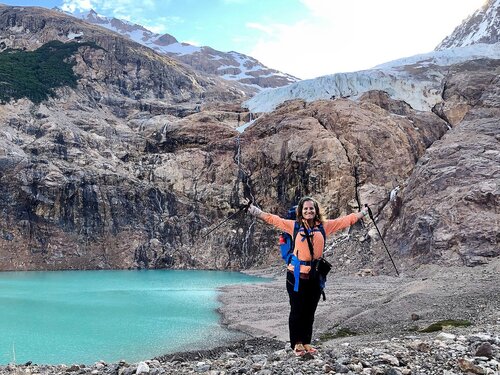
Connect with a Chile travel expert for help perfecting your itinerary, answers to all your travel questions, and fabulous local tips for a better visit!
Day 3 - Chiloé: Ancud, Castro, and Cucao
Chiloé is an archipelago located south of Puerto Montt, that is known for its natural landscapes, rich mythology, traditional cuisine, and music. But perhaps more than anything else, it is famous for its World Heritage Churches.
No matter what you’re looking for, Chiloé has something to offer, and as such is one of the main tourist attractions in southern Chile.
Morning
You’ll want to get an early start today, as the journey from Puerto Varas to Ancud, in Chiloé, will take you a a little over two hours. So, start your day with a filling breakfast and then hit the road.
To reach Chiloé, hop on Route 5 south and drive for about an hour until you reach Pargua.
From there, board a ferry for the 30-minute ride that will take you across the Chacao Channel to the town of Chacao.
Pro tip: remember to double-check the ferry schedule and availability before finalizing your plans, as the timing and frequency of passages may vary depending on the season. Generally, the Pargua to Chacao ferry runs at least two times per hour, pretty much all throughout the day and evening.
Also, keep in mind that travel times can be influenced by traffic conditions and weather. For all the necessary details, including schedules and rates, you can visit this link https://www.transmarchilay.cl
Once you depart the ferry in Chacao, head straight to Ancud, which along with Castro, are the two biggest town in Chiloé. Castro is the better base for exploring the island, and is the more interesting of the two towns, but Ancud is perhaps a bit more charming, and it’s on the route down to Castro (which takes 1.5 hours from Chacao), so it’s worth making a stop anyways.
Ancud is a pleasant little town right on the coast, and it’s a busy fishing port as well. You can wander through the central Plaza de Armas, make a quick stop at the Mercado Municipal where vendors sell produce, prepared food, and crafts, and then wander down to the port to check out the action.
This probably won’t take you much more than an hour, after which it’s time to jump back in the car and continue another hour down to Castro.
Castro is known for it’s palafitos, which are traditional Chiloé houses built on tall stilts directly over the water. They have become an iconic symbol of the island, and they are often built in unique architectural styles and painted vibrant colors. They add a real visual flair to the waterfront.
Some of the palafitos have been converted into guesthouses, and it’s my strong recommendation that you stay in one of them during your time in Castro. In my opinion, the palafitos on Pedro Montt Street are the top choice, and Cabañas Palafito Capitan Cheve is a paritcularly lovely place to stay.
To book your accommodation, you can contact them via WhatsApp at +569 8506 3188 or through email at llancabure@hotmail.com. You can also visit their Facebook page at https://www.facebook.com/cabanaspalafitocapitancheve.
Traditional Palafitos houses. Photo: Bjørn Christian Tørrissen, CC BY-SA 4.0, via Wikimedia Commons
Afternoon
Depending on how early of a start you got, you’ll probably be arriving to Castro around 12:00 or 1:00 PM. Once you've settled into your accommodation, take a leisurely stroll over to the iconic churches of Castro, which hold UNESCO World Heritage status.
You will undoubtedly be hungry by this point, but I don’t recommend lunch in Castro. Instead, I have a special idea for you: go pick up your car and drive south west about an hour to the small town of Cucao, where you can enjoy a spectacular traditional curanto at Los Cisnes de Cucao (call ahead to make sure they’ll have curanto on the day you’ll be there).
A curanto is a mouthwatering feast that brings together seafood, meats, potatoes, corn, and nalca leaves. The cooking process involves creating a large pit in the ground and heating it with hot stones from a fire. The ingredients are then layered on the stones, starting with the meat, and followed by the seafood, vegetables, and nalca leaves.
Everything is then covered with damp sacks or leaves to create a seal, and the pit is covered with soil to trap the heat and steam. The curanto is slow cooked for several hours, resulting in a flavorful and tantalizing meal. It is an awesome experience.
After your lunch, you have several options to choose from:
Muelle de las Almas: right nearby to Cucao is the legendary Muelle de las Almas (Pier of Souls), which overlooks the spectacular western coast of Chiloé.
To get to the pier, you’ll drive 7 kilometers south from Cucao to the ticket office (the pier is actually on private property), before continuing another 2 kilometers to the parking area. From there, it’s a 2.5 kilometer hike out to the pier. The hike is often quite muddy, so be sure to wear appropriate shoes and clothing.
Afterwards, head over to the gorgeous Cucao beach and enjoy a refreshing walk along the shore.
Chonchi: alternatively, if you want a low key afternoon that lets you soak up the unique charm of the region, I suggest instead heading about an hour east over to the seaside town of Chonchi to explore its pretty streets and pleasant waterfront.
There’s not tons to see or do, and there’s nothing remarkable here, but its just a nice place to unwind.
Diving in the fjords: or, if you're craving some thrilling adventure, I can't recommend enough going diving with Diving Patagonia in Quinched, just a short drive north from Chonchi. They offer incredible diving experiences in the breathtaking Chiloe fjords.
A mid-to-late afternoon trip may not be possible though, so be sure to call them to see what can be arranged.
Muelle de Las Almas in Cucao. Photo: Alex Valencia Romero, CC0, via Wikimedia Commons
Evening
After your afternoon excursion, make your way back to Castro for dinner. I suggest trying typical Chiloé dishes, and Restaurant Travesía serves up excellent traditional and heritage Chiloe cuisine.
The restaurant is located right next to the coast and just a stone’s throw away from the Plaza de Armas, so it’s also very convenient to get to.
Overnight in Castro
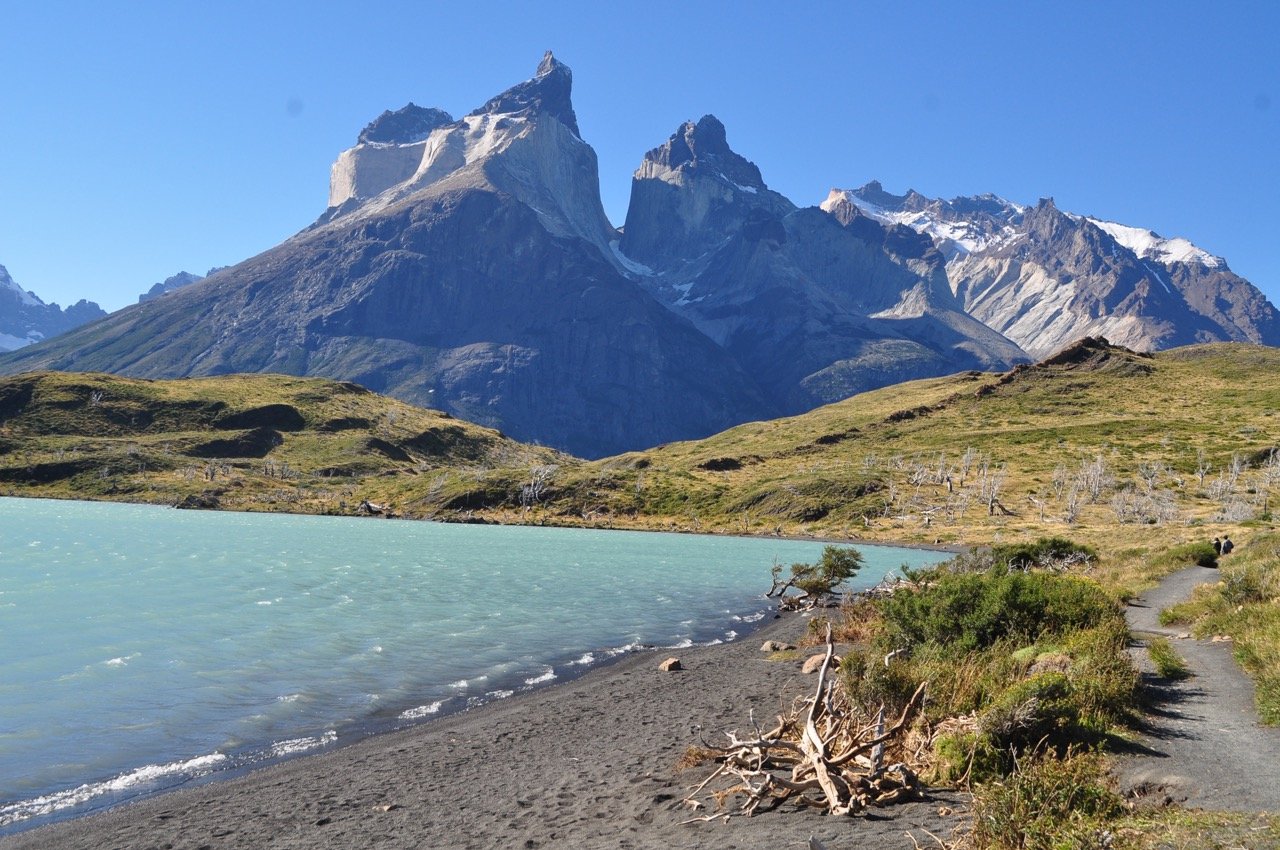
Day 4 - Chiloé: Trekking in Parque Tantauco
Parque Tantauco is a hidden gem located in the wild southern part of the Chiloé archipelago. This enchanting 118,000 hectare park is a private preserve but it’s fully open to the public, and offers a unique experience in pristine, undisturbed nature.
As you explore its winding trails, you'll be fully immersed in the beauty of lush forests, which are home to adorable creatures like the pudu, the Chilote fox, and Darwin's frog. The park may be a bit off the beaten path, but a visit is well worth it.
Lago Chaiguaco in Parque Tantauco. Photo: nicolas, CC BY-SA 2.0 via flickr
Morning
Start your day early and head south from Castro towards Quellon, the gateway to the wild and remarkable Parque Tantauco. The drive to Quellon should take about an hour and 15 minutes.
Quellon houses the administrative offices for the park, and there’s a visitors center and museum here where you can get a lot of information to prepare for your visit.
The museum isn’t remarkable by any means, but it will tell you a fair deal about the park and the area’s culture and heritage via an excellent assortment of images, artifacts, and other displays.
If you’re especially interested in history and culture, you can schedule an educational guided talk that will get much more in-depth.
When you’ve finished with the museum and visitors center, it’s time to continue on to the park. From Quellon, it will take you somewhere between 2 and 3 hours to reach Yaldad, the official entrance to the park.
There’s another visitors center here where you can get some supplies and more information. You can also go for a quick 0.5 mile hike here along the Sendero Siempreverde which passes right by the visitors center.
Now, leave the visitors center behind and continue the final 18 kilometers of your journey to the Lake Chaiguata area. This stretch of road is entirely unpaved and is often in pretty poor condition, so it’s slow going and you will definitely benefit from having a 4x4 vehicle with good clearance.
I suggest that you stay overnight in the park today, and while there are numerous camping areas, I prefer the more comfortable and convenient option of the glamping domes in the Chaiguata area.
These spacious domed structures are perfect for couples and groups and each dome has its own designated private bathroom with hot water (not ensuite style though - it’s a separate structure just a short walk away).
To make your stay more convenient, I advise opting for accommodation that offers a complete package that includes meals so that you can enjoy your time here and don’t need to worry about food arrangements.
There are also a few lovely hot tubs in this area where you can relax afer a day of hiking while enjoying magnificent views of the lake. The hot tubs usually need to be reserved in advance, so be sure to do that if you’re interested.
Afternoon
After you’ve dropped your things of at your accommodation, it’s time to get out into nature and start hiking. Tantauco has hikes of widely varying lengths, so which one(s) you do will depend on how ambitious you’re feeling.
While this won’t be an option for you, the park even has a hut system that allows for visitors to go on a 5-day hike, staying overnight in the huts all along the way.
For short hikes, the “Sunken Forest” trail (Bosque Hundido) is always very popular and it’s a lovely 1.2 mile walk through beautiful scenery. The Los Ñirres trail, which is a 3.5 mile loop that runs along the shore of Lake Chaiguata is another good option.
Evening
After a long day of travel and hiking, enjoy a quiet night back in your comfortable accommodation. Go to bed early (very early) because you’re going to have to get an uncomfortably early start tomorrow.
Overnight in Parque Tantauco
Day 5 - Chaitén and Lake Risopatrón: start of the Carretera Austral
Chaitén is a small coastal town located amongst stunning scenery, and is often called the gateway to the breathtaking Chilean Patagonia and the famous Carretera Austral (Southern Highway).
Once you're here, get ready for an exciting journey as you head approximately 200 km south to explore the legendary Carretera Austral and immerse yourself in the wonders of the Chilean Patagonia.
The town of Chaitén, seen from the water. Photo: Elvis Boaventura, CC BY 3.0, via Wikimedia Commons
Morning
Today is going to be a very, very long travel day, so buckle up. The El Pangue Lodge, south of Chaitén is your final destination, and it will take around 11 to 12 hours of total travel time to get there.
First, you’ll need to make the two to three hour drive back to Quellón, where you’ll catch the ferry to take you to Chaitén. The ferry runs on Monday, Wednesday, Thursday, and Saturday with an 8:00 AM departure, and an 6:00 PM departure on Sundays.
The ferry ride to Chaitén takes about 6.5 hours, so if you take an 8:00 AM ferry you should arrive around 2:30 PM.
Remember to purchase your ferry tickets in advance through https://www.navieraustral.cl/ and to check the website for any schedule variations.
In the offseason, the ferry may run less frequently or not at all, in which case you’ll need to return all the way to Castro to catch the Castro-Chaitén ferry. That route typically has evening departures at 6:00 PM, arriving in Chaitén a little after midnight.
Afternoon/Evening
On arrival in Chaitén, head to a local restaurant to feast on the fantastic "choritos" (mussels) that the town is known for. In general, I always suggest eating seafood when visiting here.
The town itself is unremarkable though (although the surrounding scenery is great), so after lunch it’s time to move on.
Continue south for about 3 hours, until you reach Lake Risopatrón, where you'll find the charming El Pangue Lodge. This is a truly magical place nestled in the heart of Patagonia.
You will probably arrive mid-evening, and after an incredibly long day of travel, I suspect you’ll be pleased to know that you can have an excellent dinner right at the lodge’s restaurant.
Settle in and enjoy a quiet evening in a beautiful and comfortable place.
Overnight in Lake Risopatrón
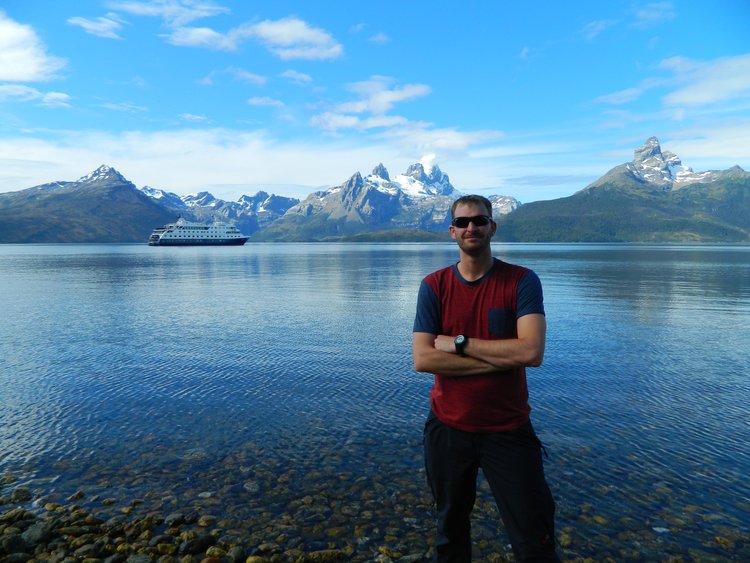
Our local experts have answers!
Connect with our Chile-based travel experts for the best local advice and expert help planning a better trip!
Day 6 - Excursions on Lake Risopatrón
The surroundings of the El Pangue Lodge are truly breathtaking, and it would be a crime not to spend some time here enjoying it. So, that’s exactly what you should do!
Lake Risopatrón offers a plethora of outdoor activities, especially hiking, water sports, and birdwatching. While you’ll eventually be continuing south today, you’ll have the morning and afternoon to enjoy this place, and should have time for a couple of different activities.
Kayaking on Lago Risopatrón. Photo: El Pangue Lodge
Morning
In the morning, I suggest starting your day with a leisurely stroll to the pier of Lake Risopatrón. If you're feeling adventurous, rent a kayak and spend a couple of hours out on the lake’s tranquil waters. While you explore, keep an eye out for Coipos, adorable creatures native to this area.
As the morning progresses, consider joining a fishing tour (the lodge organizes them) or embarking on a short hike along one of the area’s many scenic trails, most of which are within easy distance of the lodge.
No matter where you choose to hike, you'll be surrounded by towering trees like arrayanes, coigues, canelos, luma, and tepas, which make up this Valdivian temperate rainforest. Some of these magnificent trees have been standing for over a century!
On the forest floor, be sure to admire the impressive and varies ferns, mosses, and lichens. And keep an eye out for the giant nalcas that add a touch of beauty to the area.
If you're a bird enthusiast, you're in for a treat! This place is a paradise for birdwatching. Keep your eyes peeled for amazing species like the chucao, kingfisher, pitio, huet-huet, and if you're lucky, you might even spot the elusive Magellanic woodpecker.
Afternoon
As your morning winds down and lunchtime approaches, I suggest heading back to grab a meal at the lodge.
After lunch, I recommend another hike, but this time a longer and more serious one. The Sendero Laguna Los Pumas hike, which is about 6 miles in total, takes you on a climb up above the lake, and then affords glorious views over it. You’ll end the first part of the hike at a secluded little lagoon which you are very likely to have entirely to yourself.
The hike will probably take you about 3 to 4 hours, so it should be late afternoon by the time you get back.
Late afternoon/evening
At this point, it’s time to grab your things and hop back in the car for the quick 20-minute drive south to the little town of Puyuhuapi.
There’s nothing really special about this town, but it’s the ideal place from which to begin your journey into Queulat National Park, which is where you’ll be headed tomorrow.
If you arrive early enough in the day, one pleasant thing to do is to hike the 1.5 mile Mirador Sendero El Canelo trail, which departs right from town and ends with fantastic views over the town and Puyuhuapi fjord.
Puyuhuapi is also known for its rejuvenating hot springs though, and after a day of hiking and kayaking (or fishing), taking a long soak in the springs is incredibly pleasant.
Overnight in Puyuhuapi
Day 7 - Queulat National Park
Parque Nacional Queulat is known for its lush Valdivian rainforest and the famous Hanging Glacier, a massive ice formation suspended on a cliff.
The park’s trails will take you to crystal-clear waterfalls, turquoise lakes, and meandering rivers that flow through these stunning mountainous landscapes.
Get ready to experience an incredible place!
Photo: Thomas Fuhrmann, CC BY-SA 4.0, via Wikimedia Commons
Morning
I suggest starting your day with another refreshing dip in Puyuhuapi’s thermal baths. Afterwards, head south to Queulat National Park, which is about 12 miles away from Puyuhuapi.
Once you're in the park, you should start your visit with a trek to the Hanging Glacier (Ventisquero Colgante), the park's most iconic attraction. There are a couple of hikes that afford different viewpoints from which to check out the glacier, but the most popular, and I think the best one, is the Sendero Ventisquero Colgante.
This well-marked trail is about 4.5 miles and should take you a couple of hours to complete. You’ll have a bit of a climb at the start, but it gradually evens out.
The trail gets quite busy during the high season, so if you want to avoid the crowds, it’s best to get out on it early.
Next up, I suggest the Laguna Témpanos trail, which will give you a chance to see the glacier from below, right next to the lake (Lake Témpanos). You can reach this trail from the exact same place where you started the Hanging Glacier hike (they both begin in the park’s main parking lot).
The hike is very short, but once you reach the lake, you’ll have the option of taking a half-hour boat ride or of joining a kayaking tour. The kayaking tours will last a couple of hours, so plan accordingly if you want to do this.
The Hanging Glacier in Queulat National Park, seen from afar. Photo: Jdzip, CC BY-SA 4.0, via Wikimedia Commons
Afternoon
In the afternoon, I suggest continuing another 20 miles south to the Enchanted Forest trail (Bosque Encantado), which passes through an amazingly lush rainforest habitat. The trail is only a little over a mile, but it takes you through lovely brooks, streams, and dense forest, until reaching a charming lake, Laguna El Duende.
This is a very wet habitat, so prepare for extremely muddy trails, or even for the trail to be closed following not-infrequent landslides.
Afterwards, make your way back to the car and continue your journey south to Coyhaique, the largest city in the Aysén region. From the trailhead, the drive will take just under 3 hours.
Evening
Coyhaique has a wide selection of restaurants and accommodations, but I recommend seeking a more secluded, tranquil place away from the city. Regardless, it might make sense to grab dinner in Coyhaique before heading on to your accommodation.
If you're looking for a luxurious experience with incredible amenities, the Patagonia House Hotel is an excellent choice.
Alternatively, you can consider staying in cabins like Refugio Patagonia, which are located a bit further south in the beautiful Simpson Valley.
Overnight outside of Coyhaique

Day 8 - Puerto Río Tranquilo and the Marble Cathedrals
Today, your journey will take you along an incredibly scenic stretch of the Carretera Austral, until you reach Puerto Rio Tranquilo. On arrival, the stunning marble cathedrals, a must-see attraction when in Chilean Patagonia, await you.
These incredible structures lie along the gorgeous General Carrera Lake, which spans across Chile and Argentina. Recognized as a Sanctuary of Nature, the best way to explore them is by kayak.
Picture yourself paddling through hidden caves and discovering charming little corners that no one else can reach. And guess what? There's even a mind-blowing tunnel waiting for you!
The Marble Cathedral, in Lake General Carrera. Photo: Camila Eyzaguirre, CC BY-SA 3.0, via Wikimedia Commons
Morning
As with most days of this itinerary, you should get an early start as you’ve got a long drive ahead of you and you will probably be making constant stops during it (the views are mind blowing). To reach Puerto Río Tranquilo from Coyhaique, you’ll be traveling 215 kilometers south along Chile’s scenic and incredible Carretera Austral.
The drive is about 3.5 hours and you’ll be treated to truly unbelievable scenery every step of the way. This is one of those times where the journey really is every bit as impressive as the destination. Get ready to be amazed!
Realistically, you’ll probably be on the road a fair deal longer than 3.5 hours, because there are no shortage of stunning viewpoints and you’ll repeatedly want to pull over the car to admire the views.
One of my absolute favorite places along this stretch is Portezuelo Ibañez, which offers breathtaking views as it connects the Coyhaique and Cerro Castillo valleys.
You should also plan to make at least a few stops in some of the little charming towns that dot your route along the Carretera Austral.
Photo: LBM1948, CC BY-SA 4.0, via Wikimedia Commons
Afternoon
To make sure you have time for everything today, it's important to arrive in Puerto Río Tranquilo by lunchtime at the latest (this will mean having started your drive from Coyhaique by around 7:00 or 8:00 AM, if you plan to make stops along the way).
On arrival in Puerto Río Tranquilo, head straight out for lunch and don’t be shy about ordering an extra dish or two: your next activity of the day is a kayaking tour of the Marble Cathedrals, so you’ll want to fill up and have plenty of energy.
Keep in mind that the last kayak tour typically departs by 3:00 pm, so make sure you’re ready to go and have reserved your spot before then.
While you can rent kayaks and explore on your own, I highly recommend going with a guide, as they will know all the secret spots and be able to provide lots of interesting information about the area.
You'll find several agencies offering kayak tours in town, but it's always wise to book in advance. Valle Leones agency (https://valleleones.cl/en/), PatagoniaXtreme (https://www.patagoniaxtreme.cl/), and 99Aventura (https://99aventura.cl/) are all highly recommended operators.
The tours are all 3 hours or longer, so get ready for an unbelievable time out in one of Patagonia’s most beautiful places.
Evening
Depending on when you started your kayaking tour, you should be back in town in the late afternoon or early evening. You’ll likely have built up quite an appetite from a few hours of kayaking, so I’d say it’s time for dinner at this point.
Despite being a small village, Puerto Rio Tranquilo has a lot of very good restaurants to choose from, so you should not have to work too hard to get an excellent meal. This is a popular tourist destination though, so I recommend looking up where you want to go in advance and making a reservation ahead of time.
At dinner, it’s time to dive into the mouthwatering flavors of the Patagonian cuisine. You can't go wrong with a juicy roasted lamb, a fresh and flavorful salmon dish, a tender confit duck, or a taste of the authentic southern hake.
Or, if you're in the mood for something casual, head to the classic Ruedas y Rios restaurant and give their delicious burgers a try.
Overnight in Puerto Río Tranquilo
Day 9: Exploradores Glacier
One of the most iconic parks in Chilean Patagonia is the Laguna San Rafael National Park, located in the Northern Patagonian Ice Fields. A massive and extensive area, you would need more than a day to fully explore it.
However, there is a particular area of the park that’s highly accessible as a day trips is and only 52 km away from Puerto Rio Tranquilo. That place is the Exploradores Glacier.
Exploradores Glacier. Photo: Felipe Cancino, CC BY-SA 2.0, via Wikimedia Commons
Morning
As always, start your day early so that you have ample time to explore the Exploradores Valley and Glacier. The Exploradores Glacier is 52 kilometers away from Puerto Río Tranquilo, and sits within the stunning Laguna San Rafael National Park.
The drive to the glacier/park is lovely, and will take you around an hour and a half. Along the route, you’ll be treated to great views of two lakes as well as a picturesque waterfall.
Drive until you reach the CONAF shelter, which is where you will embark on an incredible glacier expedition. Make sure to book well in advance with a trusted agency that will provide you with all the necessary equipment, transportation, and a knowledgeable guide to accompany you inside the glacier.
Now, get ready for an adventure like no other, which begins with an two-hour trek through the glacier’s frontal moraine, until you reach a pristine ice area.
It's here that the real magic happens! Inside the glacier, you'll have the incredible opportunity to spend around 2.5 hours exploring the glacier’s caves, discovering small lagoons, and marveling at ever-changing ice formations.
Afternoon
Your glacier expedition should finish in the mid afternoon, after which it’s time to hop back in the car and head back to Puerto Río Tranquilo (about 1.5 hours driving).
Once back in town, I think the afternoon calls for a bit of rest and relaxation. Hang out at your hotel, explore the town, go for a drink, etc. While away a couple of hours simply doing nothing and enjoying the peace and quiet.
Evening
I have a special recommendation for you tonight: make your way to charming little place called Espacio Mármol, about 2.5 kilometers outside of town. Here, right on the banks of a river, you can indulge in the blissful experience of soaking in an outdoor hot tub.
Picture yourself sipping a refreshing pisco sour while gazing up at the sparkling stars. For me, this is the perfect way to relax and unwind after 9 thrilling days of adventure. Trust me, you deserve this moment of pure bliss under the enchanting night sky.
Overnight in Puerto Río Tranquilo
Day 10: Puerto Río Tranquilo to Balmaceda Airport
The incredible Cerro Castillo. Photo: Contranton, CC BY-SA 4.0, via Wikimedia Commons
Morning/Afternoon
On your final day in Chile, it's time to make your way to Balmaceda airport where you’ll begin your journey home. Balmaceda is approximately 190 kilometers north of Puerto Río Tranquilo, and the journey will take 3-4 hours (more if you plan on making stops).
If you book a flight later in the day and have some time to spare, I highly recommend making a stop in the charming village of Villa Cerro Castillo, where you can grab a delightful lunch at the Puesto Huemul restaurant.
The restaurant offers breathtaking views of Cerro Castillo Mountain, and it also serves delicious classic Patagonian cuisine. Make sure to try their yummy Crepe del Lago, which is filled with salmon and shrimp.
Villa Cerro Castillo is an incredibly picturesque town which sits right at the base of the majestic Cerro Castillo Mountain. It’s a delight to spend a little while here reveling in the gorgeous scenery.
Of course, if you have even more time to spend on your trip, this is a fantastic place to stay in and from which to enjoy excursions into the Parque Nacional Cerro Castillo.
After enjoying a scrumptious meal and soaking in the beauty of Villa Cerro Castillo, continue your journey to Balmaceda airport in the afternoon to catch your flight back home.
Departure from Chile.



Carola Fresno
Chile Expert based in Patagonia
¡Hola y buenos días! 👋
I'm Carola, and I've been a tour guide & travel consultant here in Chile for the last 14 years. If you're looking for some local advice on your trip, I'd love to help!
Learn more Book a consultation
Connect with Carola





